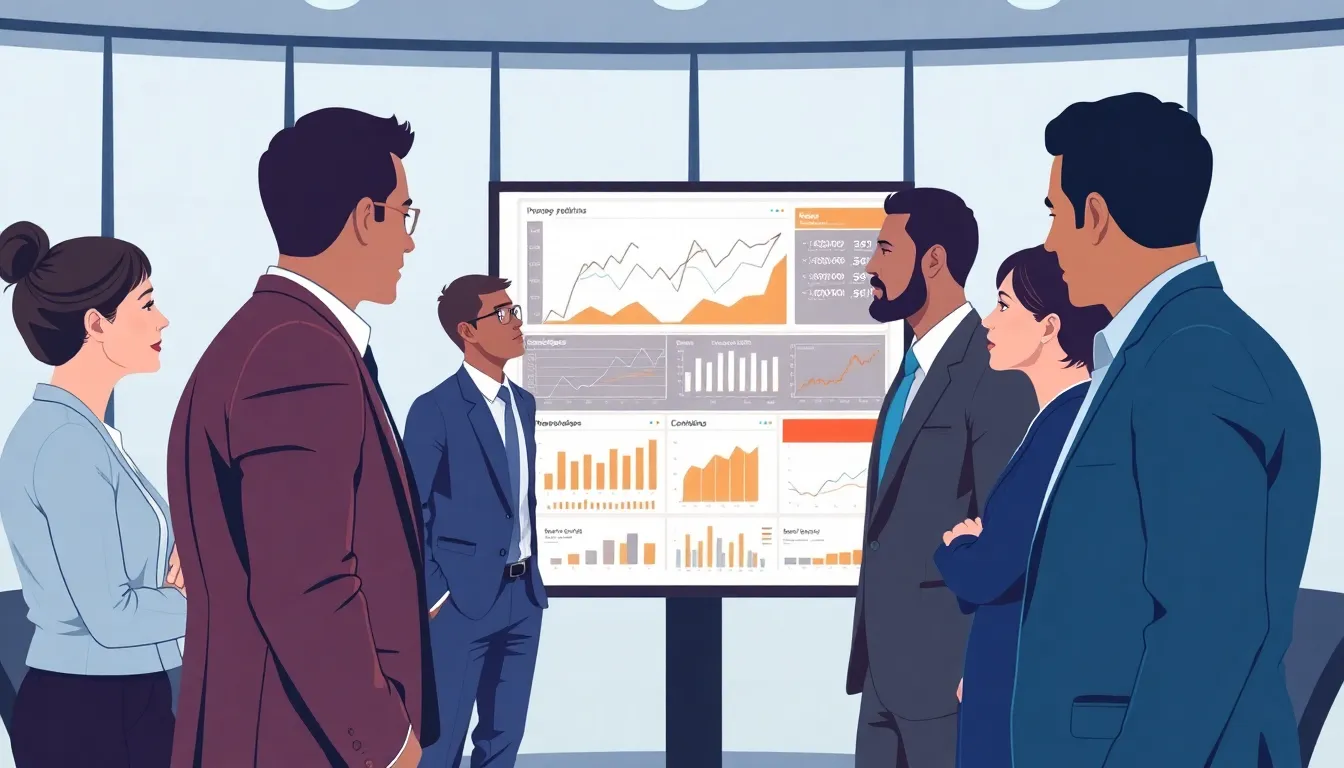Economic trends are like the weather forecast for money—they help predict the financial climate ahead. Just as a sunny day might lure people outside, understanding these trends can guide businesses and individuals toward smarter decisions. Whether it’s a booming stock market or a recession that feels like a surprise party nobody wanted, knowing what’s happening in the economy can be a game-changer.
Table of Contents
ToggleWhat Are Economic Trends
Economic trends represent general directions in the economy over a specific period. These trends can be categorized into various types, including short-term fluctuations and long-term patterns.
Understanding economic growth involves analyzing metrics like Gross Domestic Product (GDP), employment rates, and inflation. Growth in GDP indicates a robust economy, while rising unemployment may signal economic distress.
Inflation trends affect purchasing power and interest rates. Moderate inflation often reflects a healthy economy, while hyperinflation can lead to decreased consumer confidence. Central banks monitor inflation closely to implement appropriate monetary policies.
Consumer behavior also plays a significant role in shaping economic trends. Increased consumer spending typically boosts economic activity, while decreased spending signals caution among households. Tracking personal savings rates helps identify shifts in consumer confidence and spending patterns.
Investment patterns contribute to understanding economic trends. Businesses investing in infrastructure or technology indicate growth potential. Conversely, reduced investment may suggest an impending slowdown.
Global factors influence local economic trends. Trade policies, geopolitical tensions, and international market demands affect domestic economies significantly. Analyzing trade balances and currency fluctuations helps gauge the global economic climate.
Indicators such as stock market performance and housing starts provide valuable insights into economic health. Rising stock prices often reflect investor optimism, while declining housing starts can signal a contracting market.
Analysts utilize various tools and models to forecast future trends. Economic data releases like monthly job reports, retail sales figures, and consumer sentiment indices inform these predictions. Tracking these factors enables stakeholders to navigate financial decisions effectively.
Awareness of economic trends equips individuals and businesses to adapt to changing conditions. Recognizing potential shifts allows for strategic planning and informed decision-making, ultimately leading to better financial outcomes.
Types of Economic Trends

Economic trends can be categorized into three main types: long-term trends, short-term trends, and cyclical trends. Each type provides unique insights into economic conditions and behavior.
Long-Term Trends
Long-term trends reflect economic changes over extended periods, typically spanning several years or decades. Economic growth, technological advancements, and demographic shifts characterize these trends. For example, a growing population often increases demand for housing, impacting real estate markets. Additionally, shifts toward renewable energy may indicate a long-term transition within markets. Analysts track these trends to forecast industries poised for growth.
Short-Term Trends
Short-term trends emerge over shorter timeframes, ranging from months to a few years. Influenced by seasonal factors, economic events, or policy changes, these trends can quickly impact consumer behavior. Job growth during the holiday season often boosts retail sales, while unexpected events like natural disasters may disrupt production and supply chains. Monitoring these trends helps businesses adjust strategies and optimize operations in response to immediate economic conditions.
Cyclical Trends
Cyclical trends align with the economic cycle, including periods of expansion and recession. These trends typically follow a predictable pattern, characterized by increases and decreases in economic activity. For instance, during expansion phases, consumer spending generally rises, while recessions often lead to reduced spending and higher unemployment rates. Recognizing these trends allows businesses to prepare for potential economic shifts and tailor their strategies accordingly.
Identifying Economic Trends
Identifying economic trends involves analyzing key indicators and employing effective tools. Recognizing these elements helps clarify fluctuations and patterns in the economy.
Key Indicators to Watch
Gross Domestic Product (GDP) stands as a primary indicator of economic health. Monitoring employment rates reveals insights into job availability and economic stability. Inflation rates indicate purchasing power, with moderate inflation often signaling a healthy economy. Consumer confidence indices gauge public sentiment and future spending habits. Examining sectors such as retail sales and manufacturing output showcases immediate economic activity. Trade balances reflect the flow of goods and services across borders, influencing currency strength. Analysts prioritize these indicators to discern overall economic conditions.
Tools and Methods for Analysis
Analysts use various tools to assess economic trends effectively. Economic models simulate different scenarios using current data, providing valuable insights. Data visualization software allows easy interpretation of complex datasets. Regression analysis identifies relationships between variables, helping predict future trends. Both qualitative methods and market research capture consumer behavior and sentiment accurately. Surveys of business conditions yield direct feedback from industry leaders. Keeping abreast of economic reports and news updates ensures that analysts remain informed on critical changes.
Impact of Economic Trends on Society
Economic trends greatly influence societal structures and functions. They shape employment opportunities and consumer behavior, which in turn affects overall economic health.
Employment and Labor Markets
Employment rates serve as crucial indicators of economic vitality. High employment rates often reflect a robust economy where businesses actively seek to hire skilled workers. This creates a cycle, as increased employment boosts consumer spending, reinforcing economic growth. On the other hand, rising unemployment rates indicate economic distress, leading to decreased consumer confidence and spending. Labor market trends also reveal shifts in the types of industries that dominate various economies, signaling the need for workers to adapt their skills. For instance, the growth of technology sectors has driven demand for IT-related skills, influencing training programs and educational institutions.
Consumer Behavior
Consumer behavior directly correlates with economic trends, significantly impacting market dynamics. High consumer confidence typically results in increased spending, while low confidence can lead to decreased sales and tight budgets. Changes in disposable income also dictate spending habits; when wages rise or inflation remains stable, consumers feel more secure about their financial situations. Furthermore, trends in spending categories, such as technology or sustainable products, highlight shifts in societal values and priorities. Understanding these behavioral patterns equips businesses to tailor their offerings effectively, ensuring they meet evolving consumer demands.
Understanding economic trends is crucial for navigating the complexities of today’s financial landscape. By analyzing key indicators and recognizing patterns, individuals and businesses can make informed decisions that enhance their financial well-being. Awareness of these trends not only aids in strategic planning but also helps anticipate shifts in the economy. As economic conditions evolve, staying updated on relevant data ensures that one can adapt effectively. Ultimately, a keen insight into economic trends empowers stakeholders to seize opportunities and mitigate risks in an ever-changing environment.



